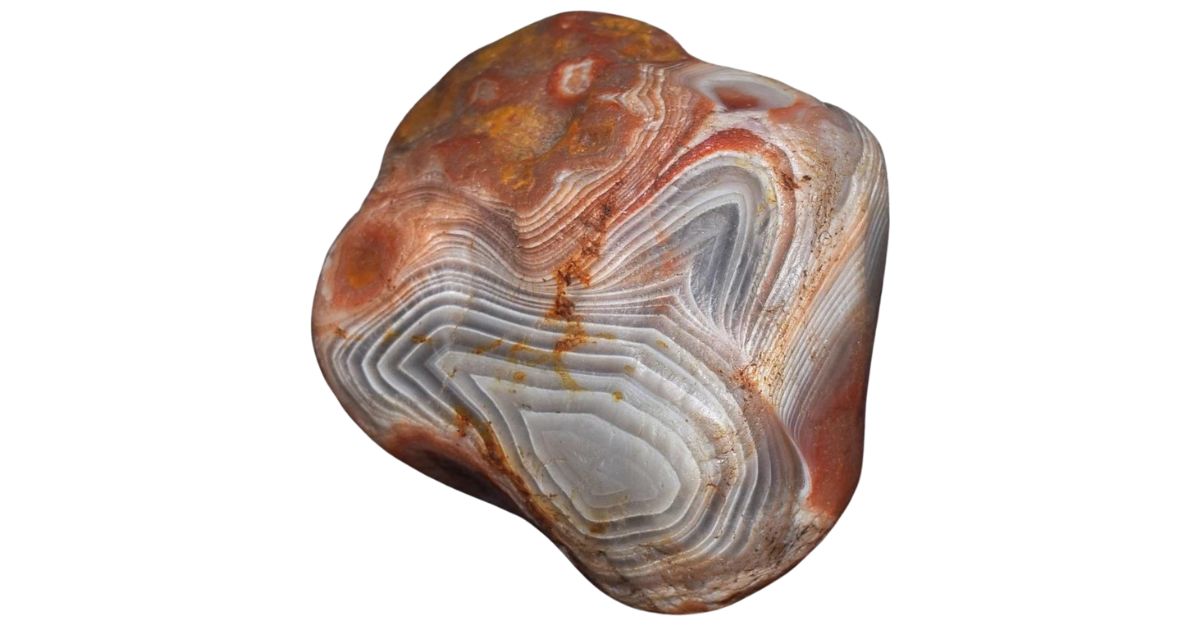Nebraska is a great place for anyone interested in geology or just looking to start a rock collection. With a wide variety of types of rocks found in Nebraska, from Lake Superior agate to opal to hematite, there’s plenty to discover.
However, finding these rocks and minerals can be tough if you don’t know what to look for or where to start searching. It helps to have some knowledge about these natural wonders to make your search successful.
Knowing the characteristics of these rocks and minerals, such as their color, luster, and where they are commonly found, can guide you in the right direction.
A List of The Common Rocks, Stones, and Minerals Found in Nebraska
Nebraska’s landscape is a hidden gem for rock and mineral enthusiasts, offering a variety of specimens across its terrain. Find more information about where to look and the rocks and minerals you can find with these guides:
The Nebraska State Rock, Mineral, and Gem
Nebraska is represented by a rock and gem that reflect the state’s rich geological history:
| Nebraska State Rock | Prairie Agate |
| Nebraska State Gem | Blue Chalcedony |
Exploring Nebraska’s outdoors for rocks and minerals is an exciting activity, but knowing the rules can make your adventure both fun and legal.
The Nebraska Game and Parks Commission offers helpful tips and guidelines for rock collecting to ensure everyone enjoys this hobby responsibly.
Calcite
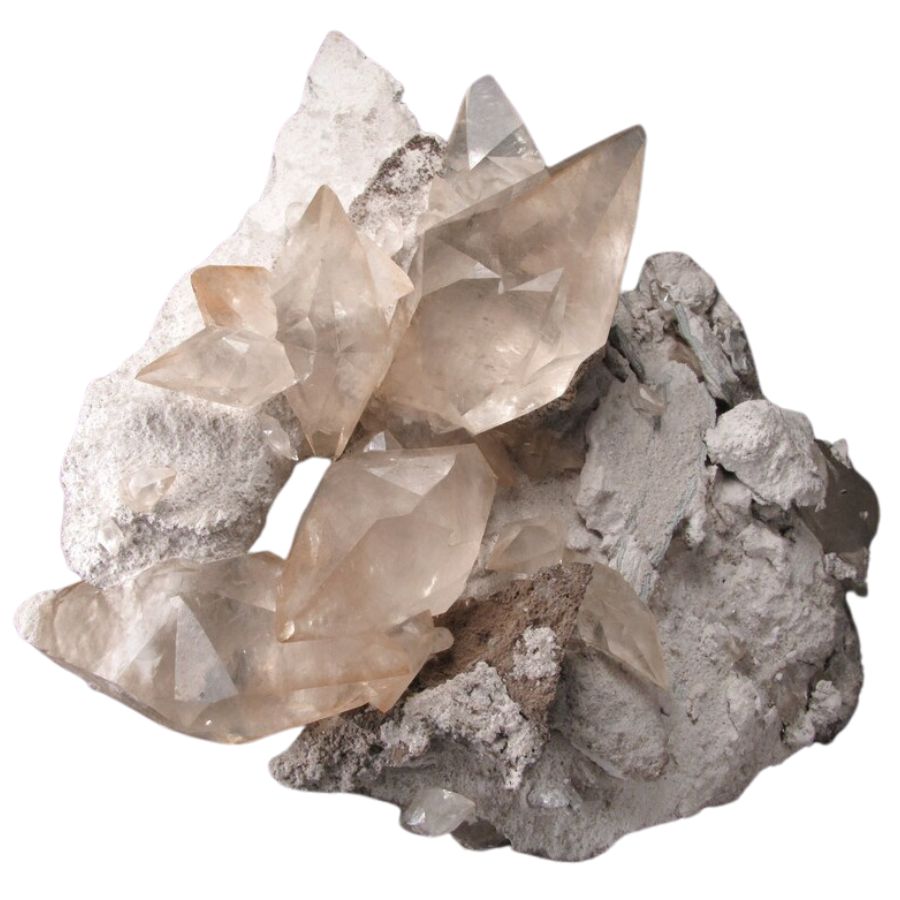
Calcite is a common mineral found in rocks all over the world. It’s made of calcium carbonate and can appear in many colors, from clear to black.
Calcite has some cool characteristics, like how it splits into rhomboid shapes and reacts with vinegar by fizzing. This reaction is due to its chemical makeup, making it easy to identify.
People use calcite for various things, such as in the construction of buildings and roads. It’s also ground up to make cement and is an important part of toothpaste, giving it the abrasive quality needed for cleaning teeth.
Where you can find calcite in Nebraska
- Weeping Water
- Crawford
- Hay Springs
Gypsum
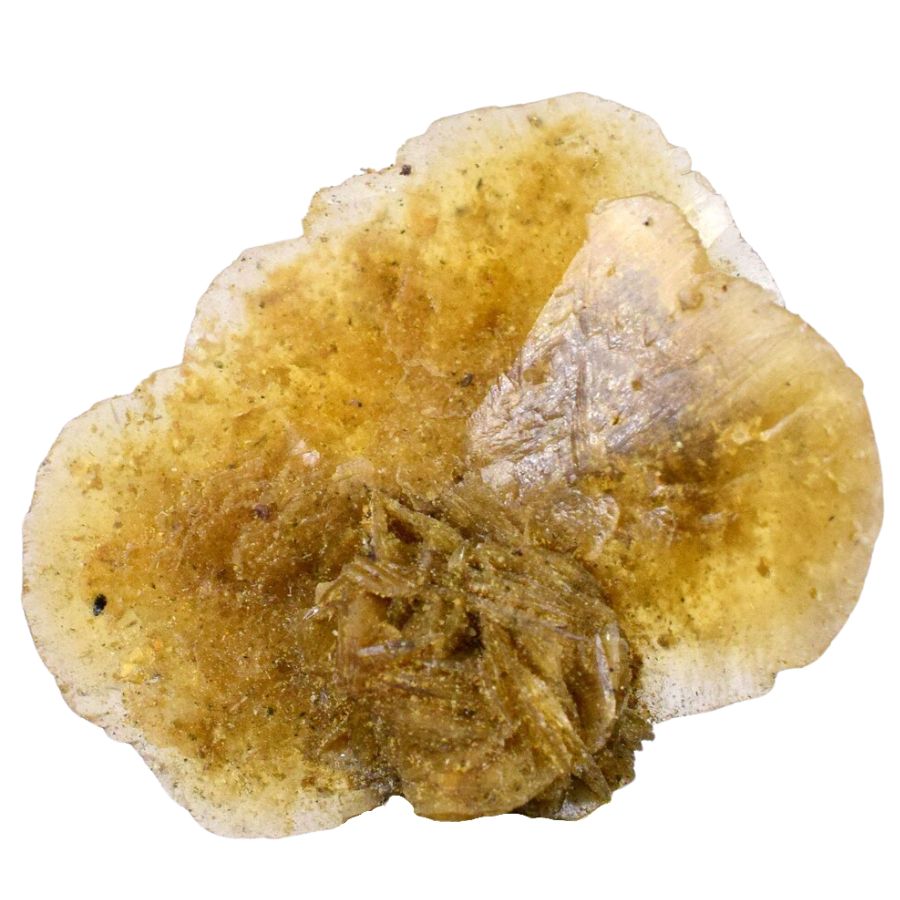
Gypsum is a soft mineral made mostly of calcium sulfate. It often appears white or translucent and can be found in layers of sedimentary rock.
Gypsum has the interesting ability to be shaped and hardened when mixed with water, then heated, which makes it very useful. For example, it’s used to make plaster of Paris, a material that’s been used for sculptures and building materials.
Gypsum is also used in the construction industry to make drywall for walls and ceilings. In addition, it’s a key ingredient in some types of cement and is used as a soil conditioner in agriculture, helping to improve soil structure.
Where you can find gypsum in Nebraska
- Volcano Hill
- Humboldt
- Carlile Shale
Jasper
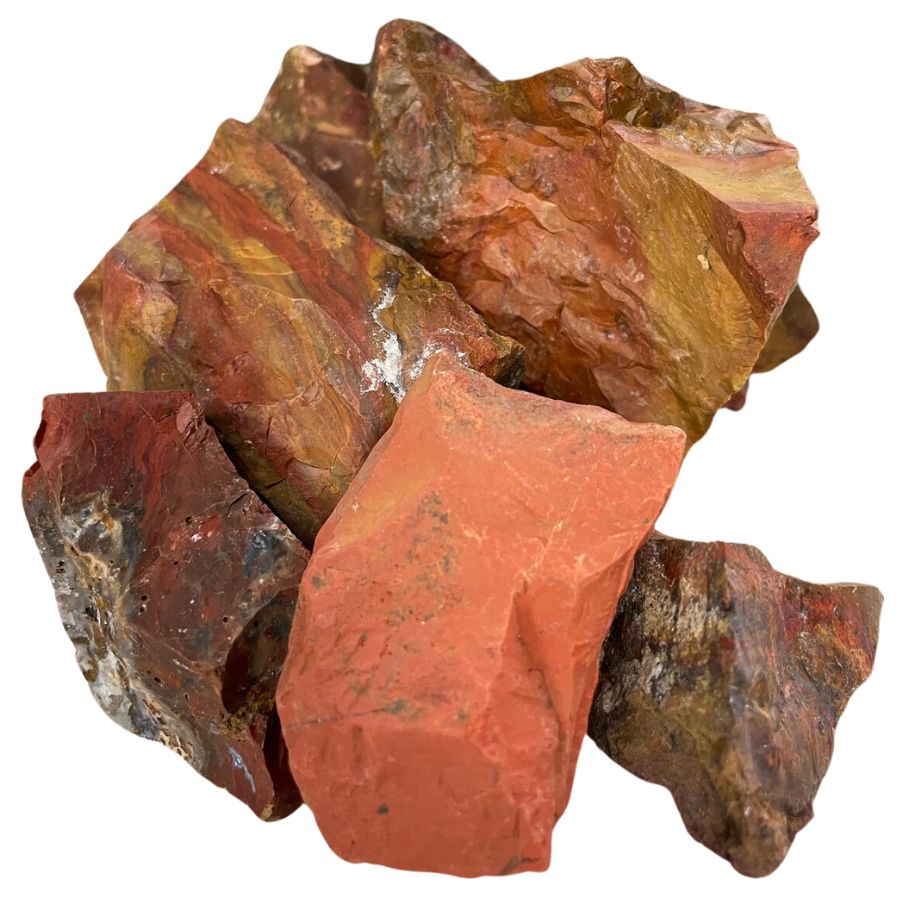
Jasper is a kind of quartz that stands out because of its rich colors and patterns, which can include shades of red, yellow, brown, and green.
It’s created from silica-rich sediment or volcanic ash that hardens over time, incorporating various minerals that give it its varied colors.
Among the rocks and minerals found in Nebraska, jasper is prized for its beauty and durability. Its smooth surface and ability to be polished make it a favorite for jewelry and decorative items.
Jasper is not just for looking at; it’s also used in making jewelry like necklaces and bracelets because of its strong, colorful appearance.
Additionally, craftsmen often choose jasper for carving into beads or small statues, taking advantage of its hardness and the way it can be polished to a high shine.
Where you can find jasper in Nebraska
- Keith County
- Hebron
- Ogalla
Lake Superior Agate
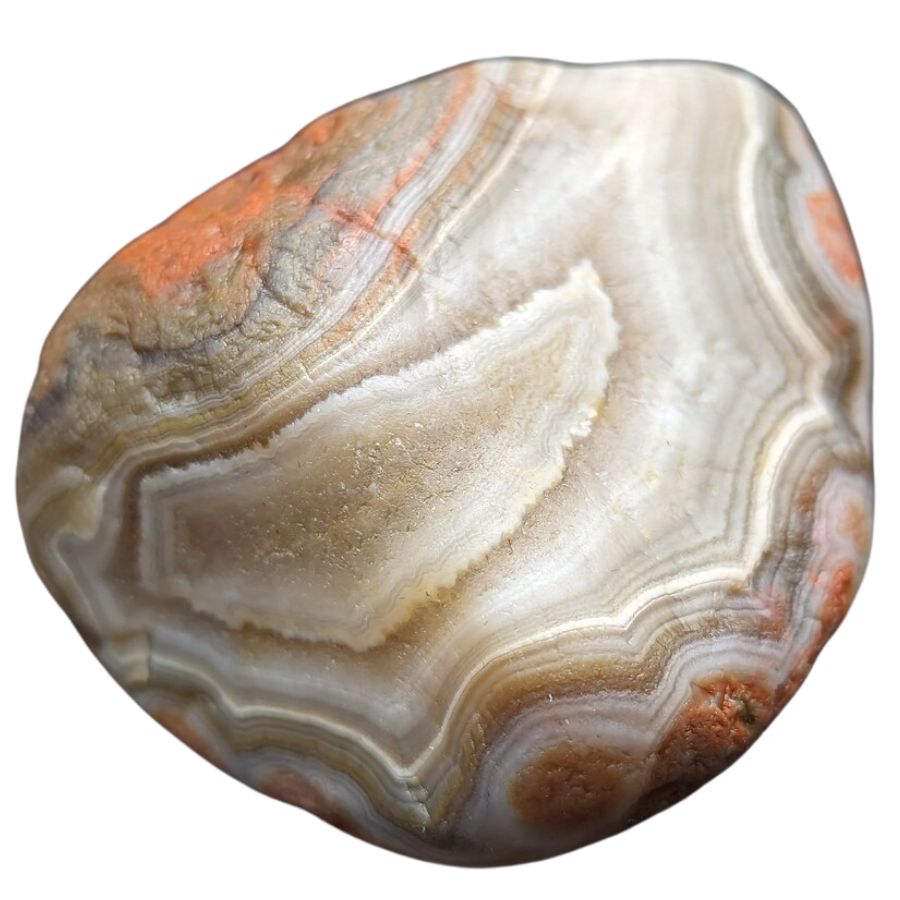
Lake Superior agate is a colorful gemstone that formed billions of years ago when North America’s Midwest was volcanically active. It’s known for its rich red, orange, and yellow colors, which come from iron oxide.
This agate has bands of color, making each stone look like it has its own story. The banding happens because layers of silica cooled at different times inside ancient lava flows.
People use Lake Superior agate for jewelry and decorative pieces because of its beautiful banding and colors. It’s also the state gem of Minnesota, showing its importance in the area.
Where you can find Lake Superior agate in Nebraska
- Otoe County
- Weeping Water
- Table Rock
- Ashland
Marcasite
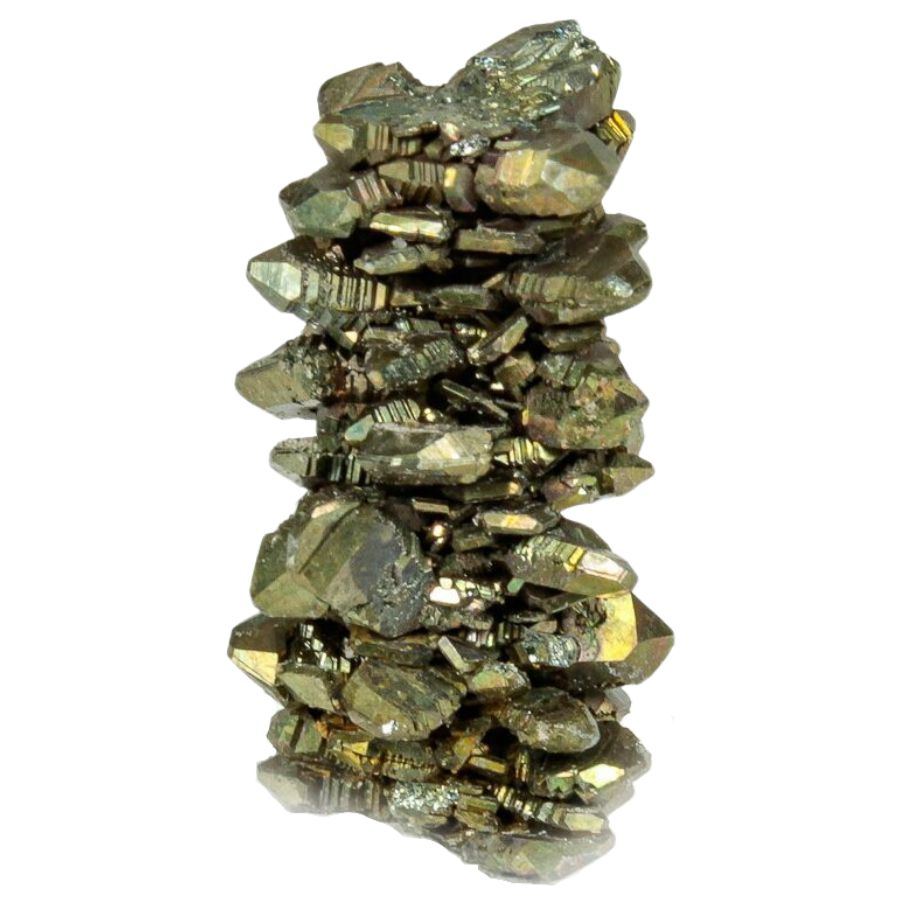
Marcasite is a mineral that looks a lot like pyrite, often called fool’s gold, because of its metallic luster and pale brass-yellow color. It forms when iron sulfide reacts with oxygen and sulfur in low-temperature, acidic environments.
This mineral is famous for its shiny, sparkly appearance and crystal structure, which can look like tiny, faceted gems.
Marcasite often grows in sedimentary rocks as small, tabular crystals or as rosette-like formations, adding to its visual appeal.
While not commonly used in modern jewelry due to its brittleness, marcasite was popular in Victorian times for its reflective beauty and affordability.
Today, it’s mainly collected by mineral enthusiasts and occasionally used in decorative items, showcasing the intricate details of its crystal formations.
Where you can find marcasite in Nebraska
- Plattsmouth
- Humboldt
- Holmesville
Petrified Wood
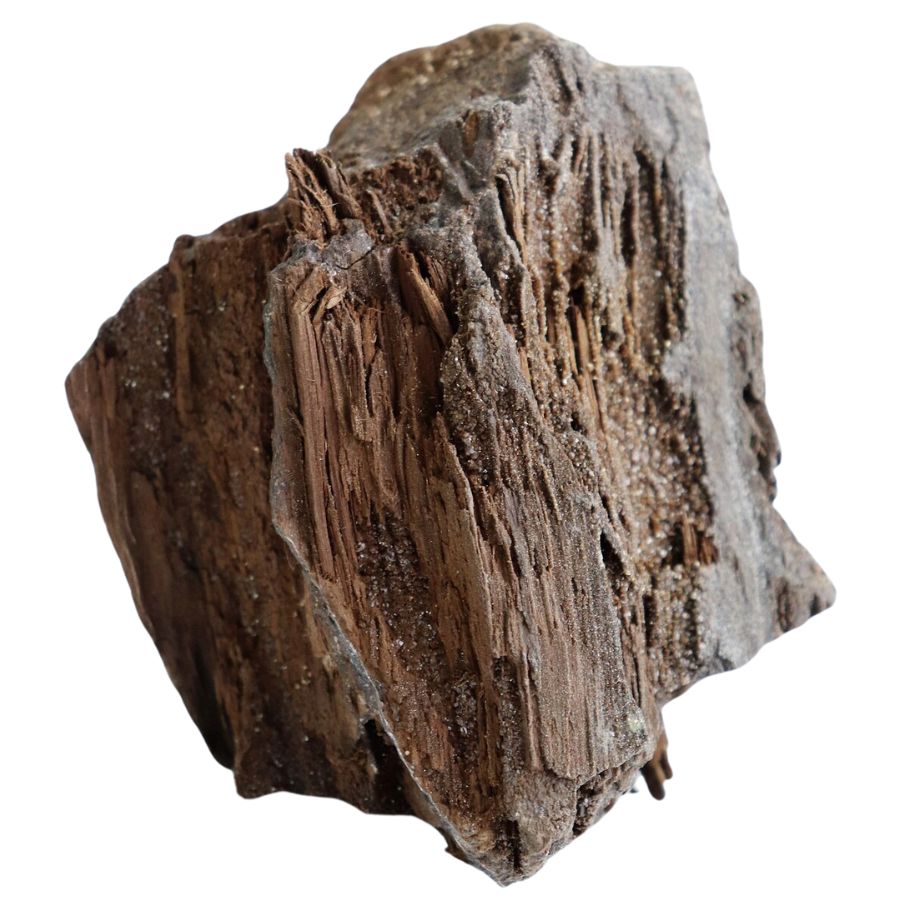
Petrified wood is what happens when wood turns into stone through a process called permineralization.
This occurs when the wood gets buried under sediment and mineral-rich water flows through, replacing the organic material with minerals like quartz.
Petrified wood can look just like regular wood on the outside, but it’s as hard as rock on the inside. It often retains the original structure of the wood, including tree rings and bark texture, making each piece beautifully detailed.
The price of petrified wood can vary, depending on its size, color, and where it was found. People use petrified wood for jewelry, decorative items, and sometimes even as furniture.
Where you can find petrified wood in Nebraska
- Ayr
- Stinking Water Creek
- Beaver City
- Wood River
Quartz
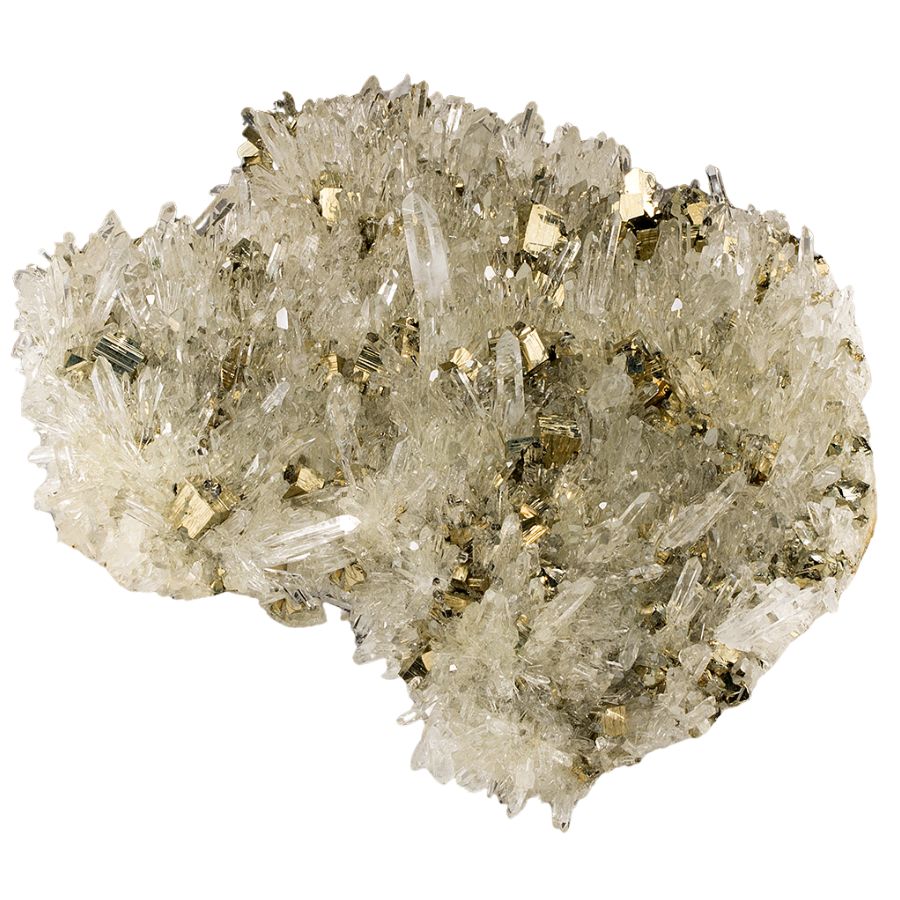
Quartz is a common mineral found in the Earth’s crust, known for its hard and durable nature. It forms when silicon and oxygen combine, and it can grow in a wide range of environments, from volcanic regions to hydrothermal veins.
This crystal comes in many colors, from clear to black, and even pink or purple, depending on the types of minerals mixed in. Its crystal shape is usually hexagonal, and it has a glassy luster that makes it very attractive for various uses.
Quartz is used in making jewelry, like necklaces and bracelets, because of its beauty and strength. It’s also important in technology; quartz crystals are used in watches, computers, and phones to help keep accurate time.
Where you can find quartz in Nebraska
- Dawes County
- Holmesville
- Crawford
- Wood River
The Gemstones Found in Nebraska
This state offers a variety of gemstones hidden beneath its surface, waiting to be discovered by eager collectors and nature enthusiasts. You can find more tips and tricks in the guides below:
Blue Chalcedony
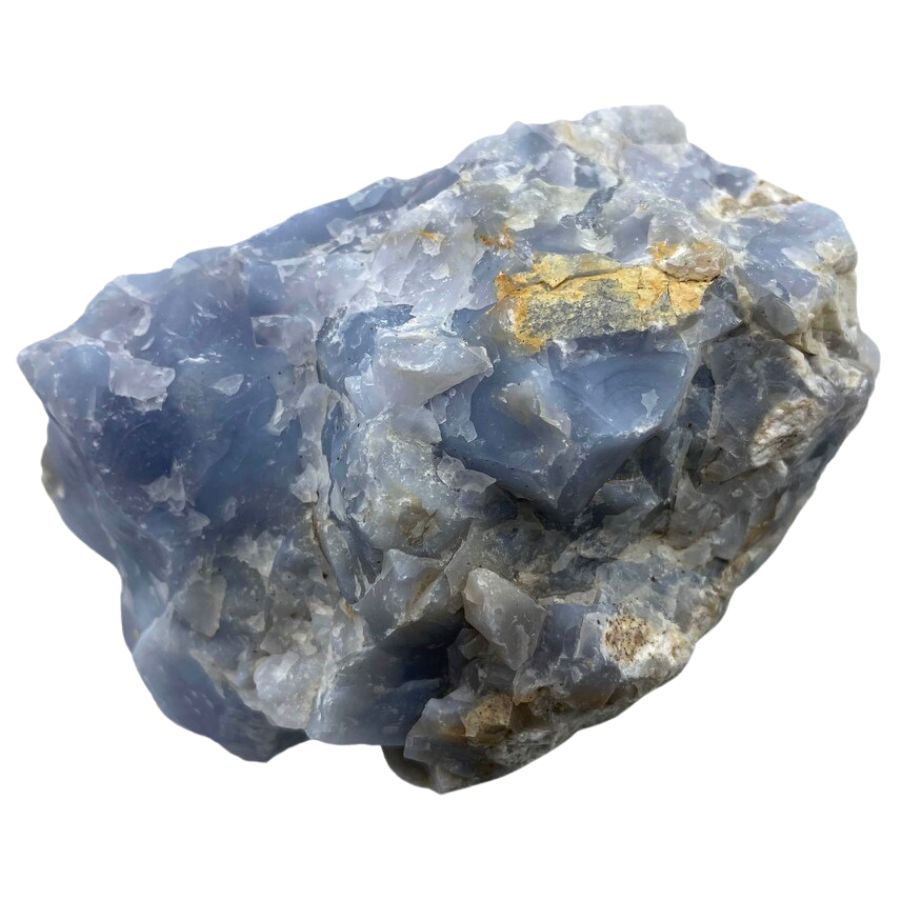
Blue chalcedony is a type of quartz that has a soft, blue color and a waxy luster. It forms when silica-rich fluids cool down and crystallize, often in cracks and cavities within rocks.
This gemstone is known for its translucent quality and smooth texture, making it stand out among other minerals. Its calming blue shade can range from light to medium blue, and sometimes it has a slight hint of purple.
Blue chalcedony is popular in jewelry, such as rings, necklaces, and earrings, because of its beautiful color and durability. It’s also used in carving and crafting decorative items, adding a touch of elegance to various art pieces.
Where you can find blue chalcedony in Nebraska
- Crawford
Celestine
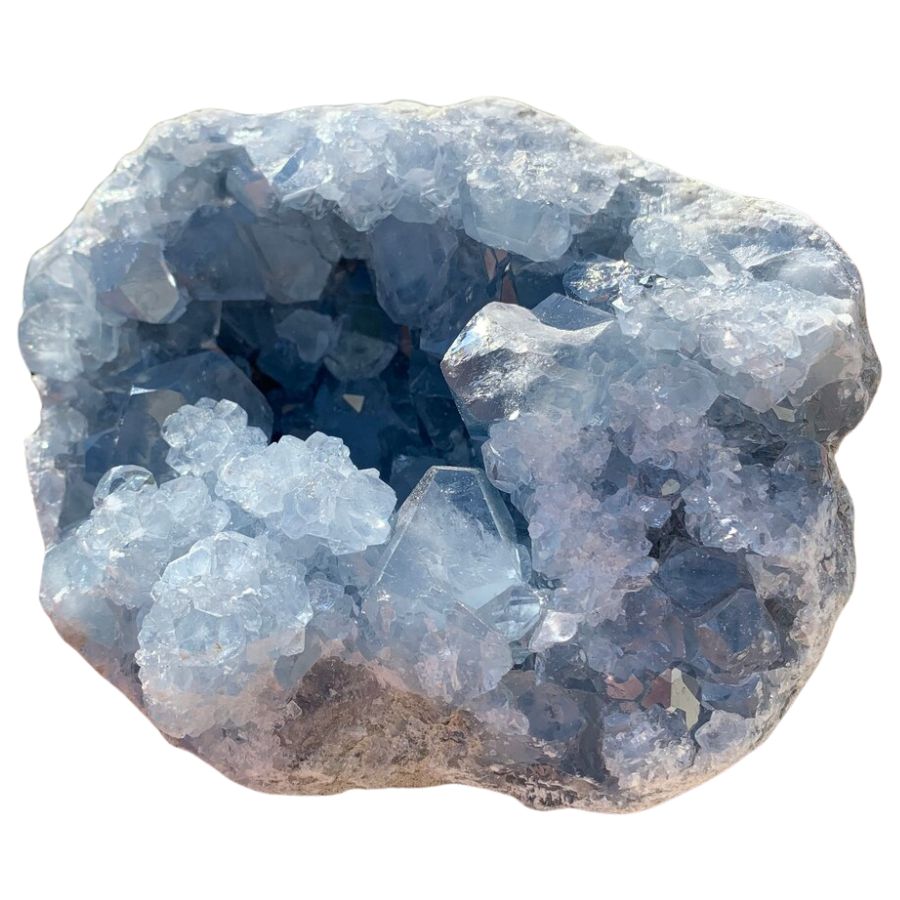
Celestine, also known as celestite, is a mineral known for its delicate blue color and crystal structure. It typically forms in sedimentary rocks, where it fills cracks and cavities, often alongside gypsum and halite.
The mineral gets its name from the Latin word for “heavenly,” which is fitting given its soft, sky-blue hue that can also appear colorless, white, or pink.
Celestine crystals are prized for their transparency and glassy to pearly luster, making them stand out in any collection.
This mineral is not just for looking at; it’s used in the making of fireworks and in the chemical industry to produce strontium compounds.
Additionally, small pieces of celestine are sometimes cut into gems for jewelry, adding a touch of natural beauty to rings and necklaces.
Where you can find celestine in Nebraska
- Otoe Creek
- Fullerton
- Hay Springs
Garnet
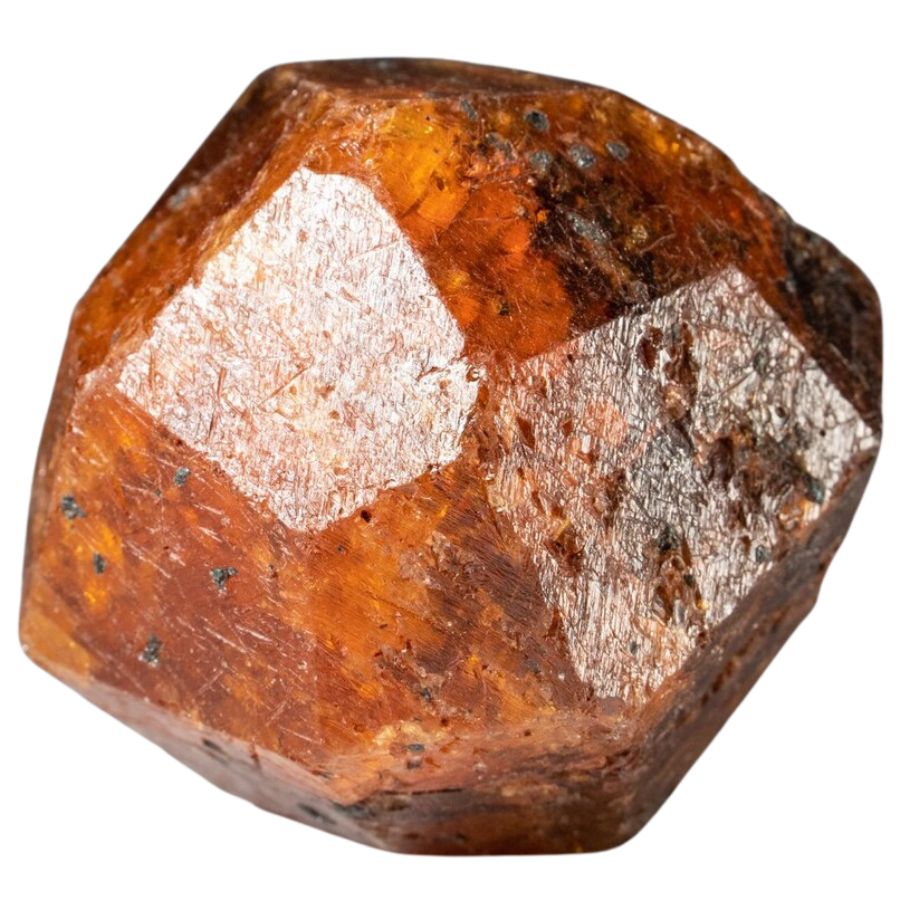
Garnet is a group of minerals that have been used since the Bronze Age for jewelry and abrasives. It forms under high temperatures and pressures, typically found in metamorphic rocks.
These gems are known for their wide range of colors, from deep red to vibrant green, although the most common color is a rich, deep red. Each color comes from different chemical compositions within the garnet group.
Garnet is popular in jewelry, such as rings and necklaces, because of its hardness and vibrant colors.
It’s also used in industrial settings for cutting steel and other materials because garnet sandpaper and garnet cutting tools are very effective.
Where you can find garnet in Nebraska
- Ogalla
- Sutherland
- McCook
Labradorite
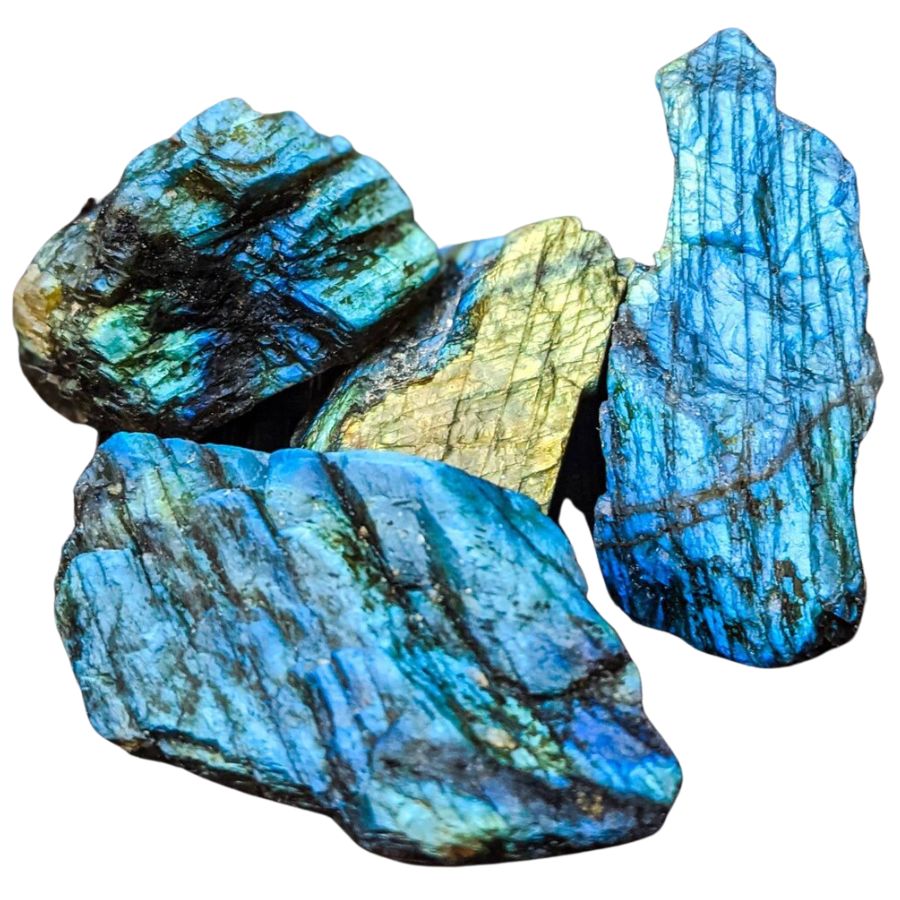
Labradorite is a fascinating mineral that’s part of the feldspar family, known for its dazzling play of colors.
It forms in igneous rocks and is most famous for its remarkable optical effect known as labradorescence, which displays a spectrum of colors when light hits it from certain angles.
This effect gives labradorite a unique appearance, with colors that can shift from blues and greens to oranges and reds. The colors seem to glow from within, thanks to the way light reflects off internal structures.
Labradorite is often used in jewelry, like necklaces, bracelets, and earrings, because of its captivating appearance. It’s also used to make decorative items and sculptures.
Where you can find labradorite in Nebraska
- Two Rivers State Recreation Area
- Broadwater
- Thedford
Nephrite
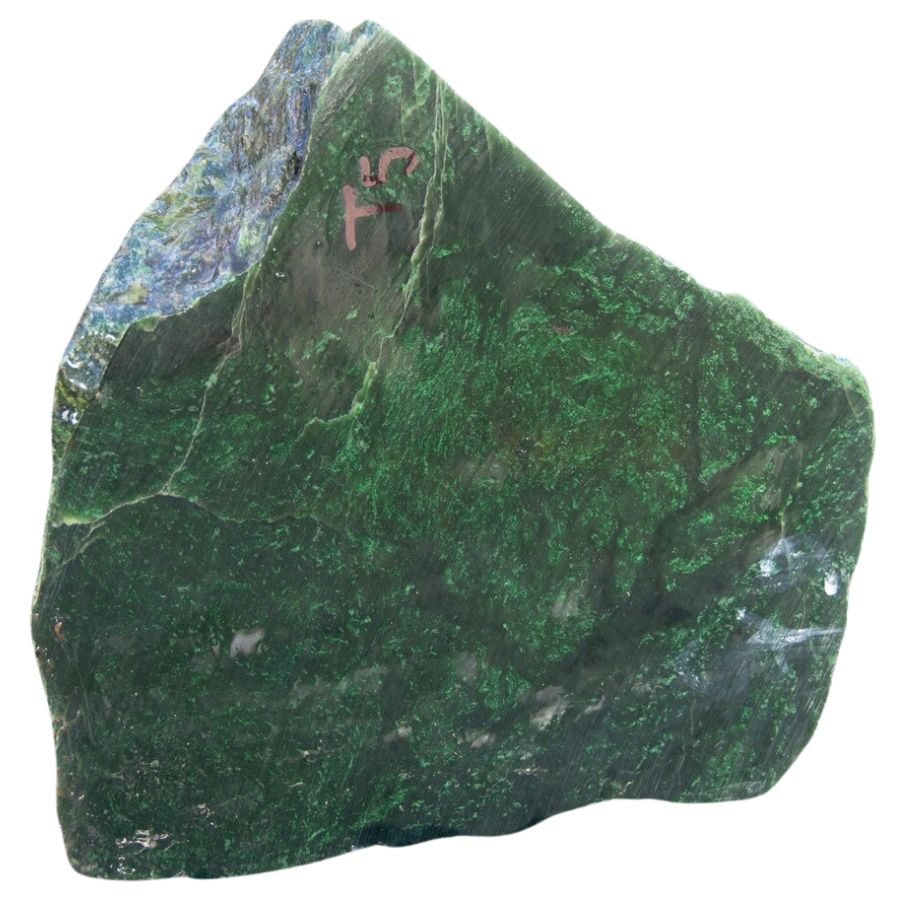
Nephrite is a type of jade, one of the two minerals recognized as true jade, the other being jadeite. It’s formed from tightly interlocked mineral fibers, which give it a strong, compact structure.
This mineral is known for its toughness and was used historically to make tools, weapons, and carvings. Today, nephrite is valued for its beauty and is one of the gemstones found in Nebraska.
It comes in shades of green, but can also be found in white, grey, black, and yellow. Nephrite is used in jewelry, such as bracelets and pendants, and in ornamental objects that showcase its subtle, yet rich colors.
It’s also carved into sculptures and various decorative items, appreciated for its smooth texture and durability.
Where you can find nephrite in Nebraska
- Nebraska City
- Humboldt
- Ashland
Opal
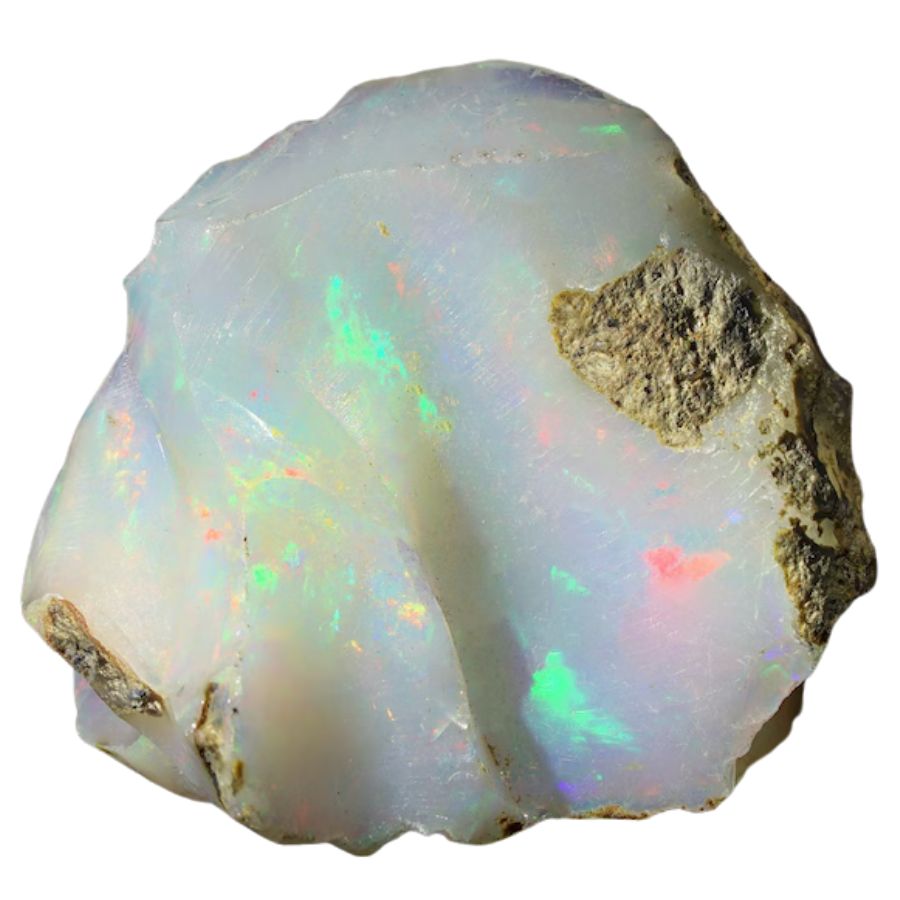
Opal is a precious gemstone known for its ability to display a whole rainbow of colors. It’s formed from silica-rich water that seeps into deep cracks and voids in the ground, then hardens over time.
This gemstone is famous for its play-of-color, which means it can show different colors when viewed from various angles. The colors change due to the diffraction of light passing through tiny silica spheres within the opal.
Opal is used in all sorts of jewelry, like rings, necklaces, and earrings, because of its striking appearance. It’s also considered to bring good luck and happiness, making it a popular choice for special gifts.
Where you can find opal in Nebraska
- Ainsworth
- Bridgeport
- Beaver City
- Arnold
Prairie Agate
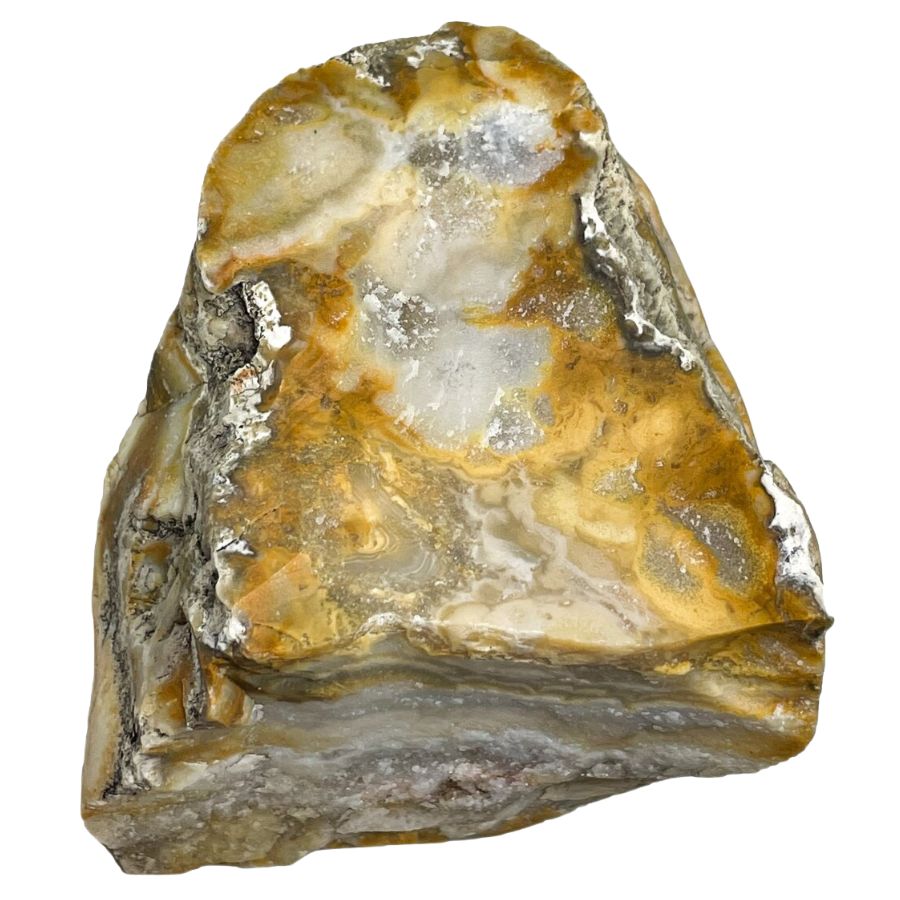
Prairie agate is a type of agate found mostly in the Great Plains, known for its earthy colors and banded patterns. It forms when silica-rich water fills cavities within rocks, then solidifies over time into layers of colorful bands.
This stone often has a mix of red, brown, yellow, and sometimes even green hues, making each piece distinct. The bands within prairie agate can look like landscapes or sunsets, which is why it’s so admired.
People use prairie agate in jewelry and as decorative items because of its natural beauty and durability. It’s also popular among collectors who appreciate the subtle differences between each stone.
Where you can find prairie agate in Nebraska
The Crystals Found in Nebraska
Nebraska is a hidden gem for those interested in uncovering the beauty of natural crystals. The state’s diverse geology provides an exciting playground for collectors and nature lovers to explore and find these natural wonders.
Aragonite
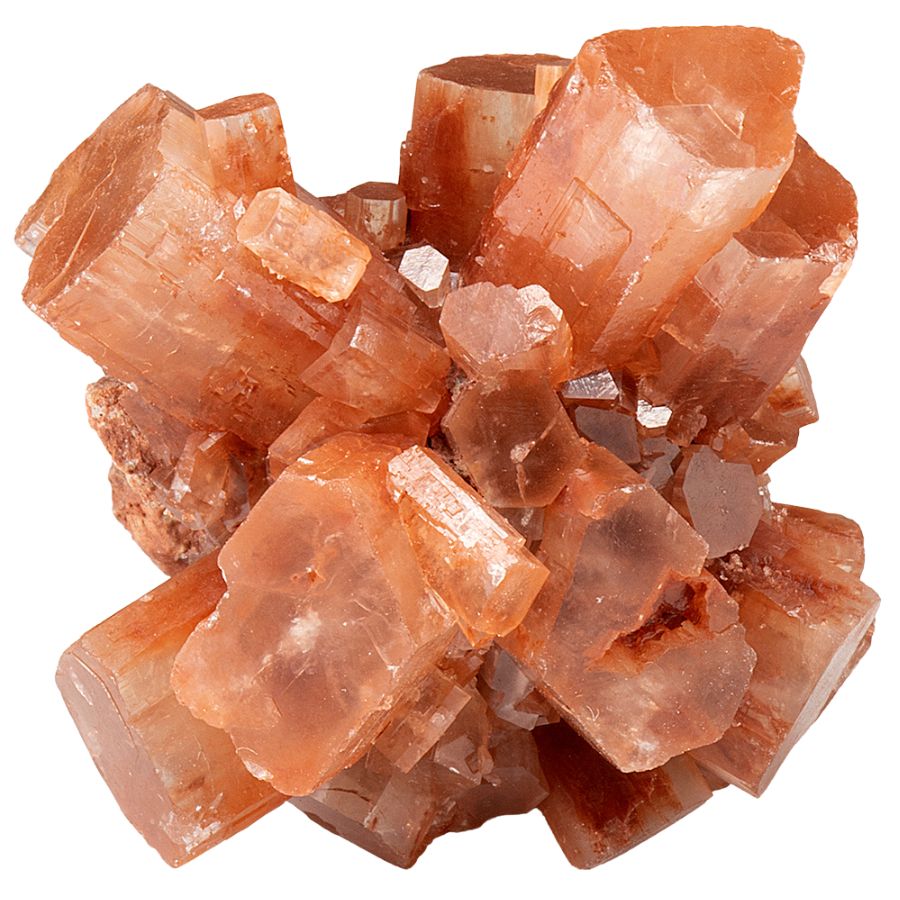
Aragonite is a mineral that looks a lot like calcite but has a different crystal structure. It forms in ocean settings where magnesium is low, creating beautiful, needle-like crystals.
This mineral can also grow in caves as stalactites and stalagmites, adding to its variety of shapes. Aragonite is known for its ability to change colors under different lighting, which makes it quite fascinating to observe.
It’s used in aquariums to help balance the pH level because it slowly dissolves in water, releasing calcium carbonate. Additionally, aragonite is used in jewelry and decorative items, showcasing its unique patterns and colors.
Where you can find aragonite in Nebraska
- Plattsmouth
- Bloomington
- Wymore
Chalcopyrite
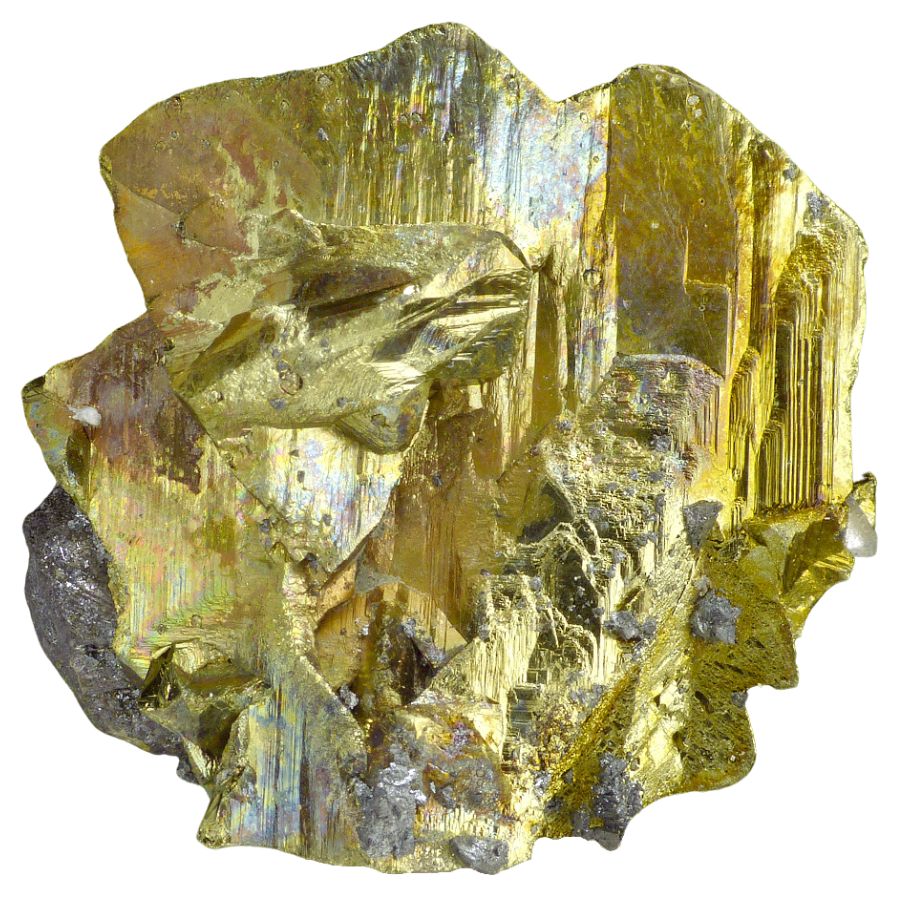
Chalcopyrite is a copper iron sulfide mineral that shines with a metallic luster and has a golden yellow color. Chalcopyrite is often mistaken for gold, earning it the nickname “fool’s gold.”
This mineral is known for its bright, brass-yellow appearance that can tarnish to iridescent blues and greens when exposed to air. It forms in high-temperature environments, often associated with copper-rich minerals.
It’s a major source of copper and is mined extensively for this purpose. Besides its industrial use, chalcopyrite is also collected by mineral enthusiasts and sometimes used in jewelry for its attractive color and sparkle.
Where you can find chalcopyrite in Nebraska
- King Hill Quarry
- Elk Creek
Chert
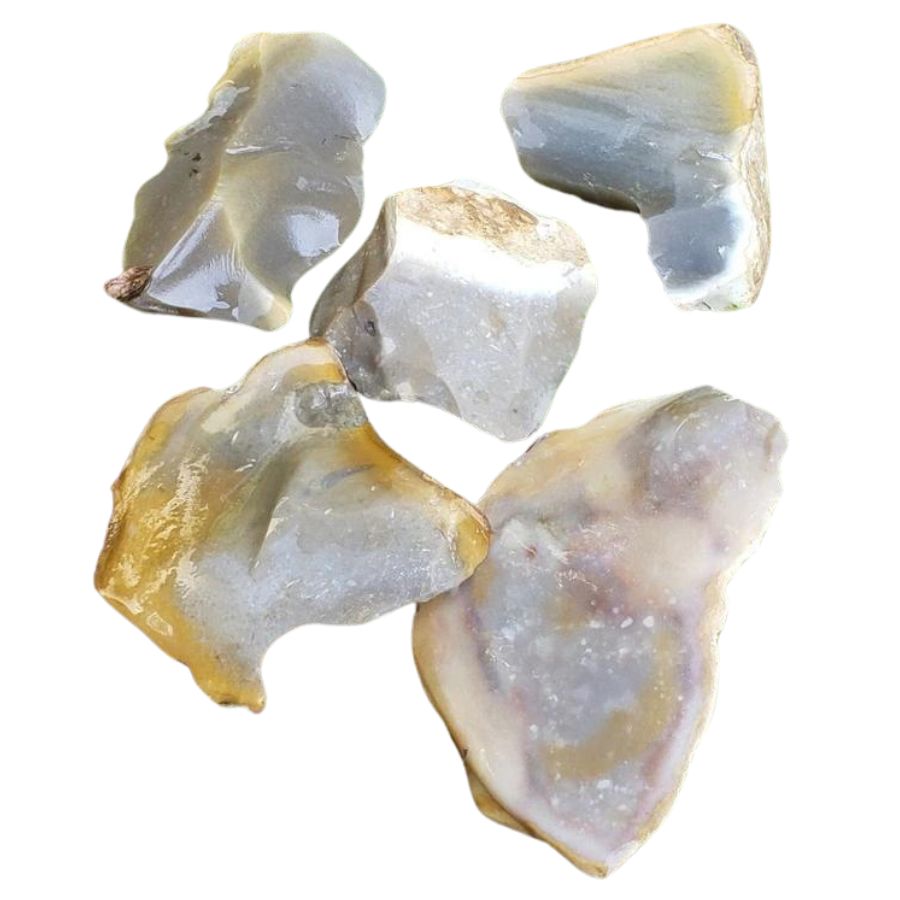
Chert is a hard, fine-grained rock made mostly of quartz, which forms in a variety of environments, from deep sea to hot springs. It often appears in nodules or layers within limestone or other sedimentary rocks.
This rock is known for its ability to break with a sharp edge, making it useful in the past for making tools and weapons.
The colors of chert can range from white to black, with red and green shades coming from iron oxide or other minerals.
Today, chert is sometimes used in landscaping and as a building material for its aesthetic appeal. It’s also collected by enthusiasts who appreciate its smooth texture and interesting colors.
Where you can find chert in Nebraska
- Johnson County
- Weeping Water
- Newcastle
- Beaver City
Chromite
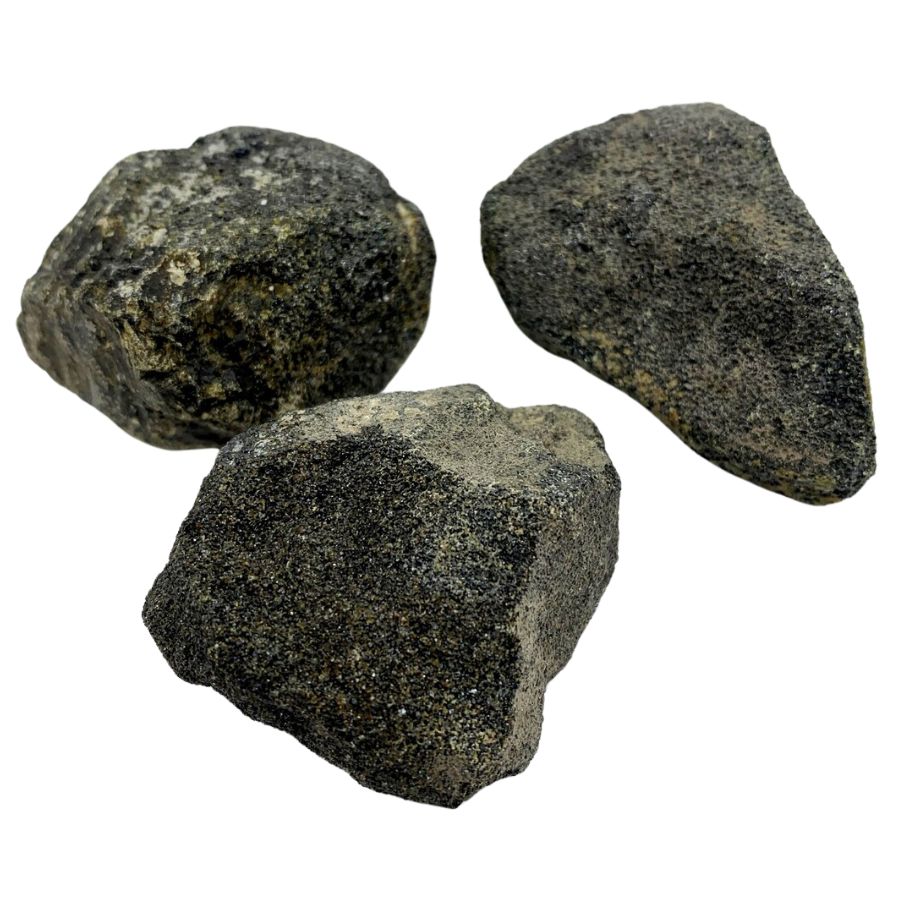
Chromite is a mineral that’s mostly made of iron, magnesium, and chromium oxide. It forms deep in the Earth’s crust where hot magma cools and solidifies.
It also has a dark, shiny appearance that makes it easy to spot among other rocks and minerals.
This mineral is especially valuable because it’s the main source of chromium, a metal used to make stainless steel and many other products.
It’s mined extensively and used in the manufacturing of chrome plating and as a pigment for glass, glazes, and paints.
Additionally, chromite is used in the refractory industry to make materials that can withstand high temperatures, such as those found in blast furnaces and molds for casting metal.
Where you can find chromite in Nebraska
- Potter meteorite
- Sutton meteorite
- Sioux County meteorite
Dolomite
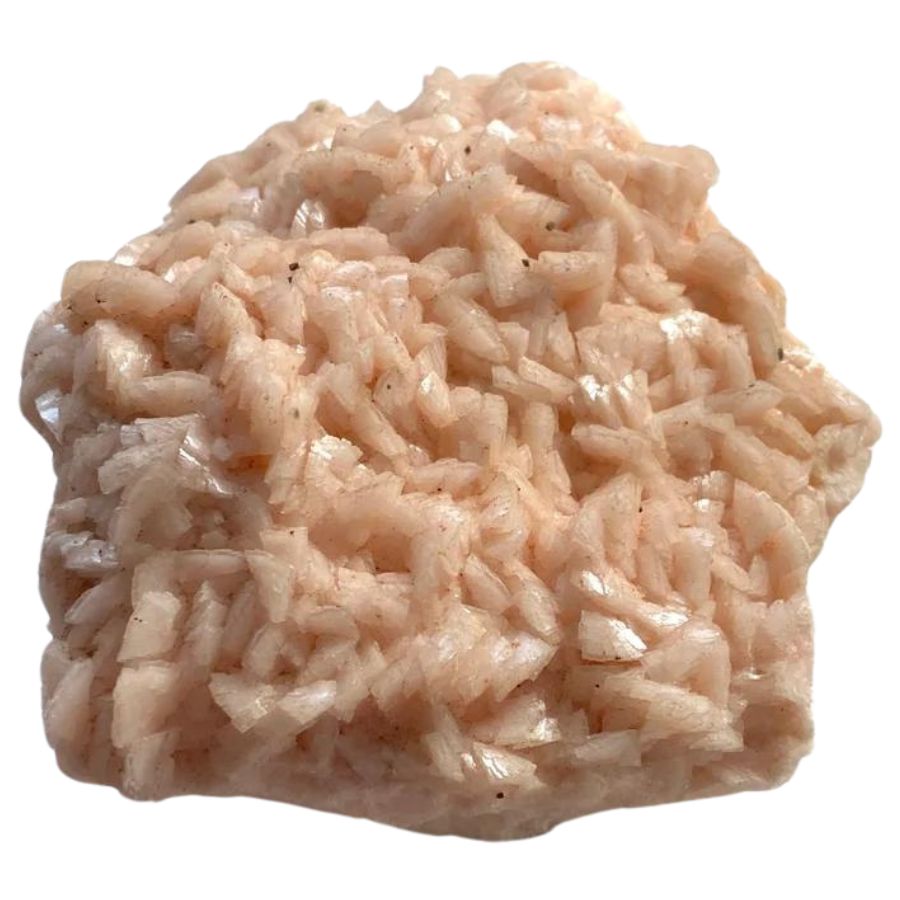
Dolomite is a type of rock that contains a large amount of the mineral also known as dolomite, which is made of calcium magnesium carbonate. It forms over time as limestone is altered by magnesium-rich groundwater.
This rock is not only one of the crystals found in Nebraska but is also widespread around the world. Dolomite has a distinct crystal structure that can make it very attractive when cut and polished.
It’s used in the construction industry for both building and decorative materials because of its durability and attractiveness.
Additionally, dolomite serves as an important petroleum reservoir rock and is a critical source of magnesium for various industrial processes.
Where you can find dolomite in Nebraska
- Elk Creek
- Fort Calhoun
- Nehawka
Hematite
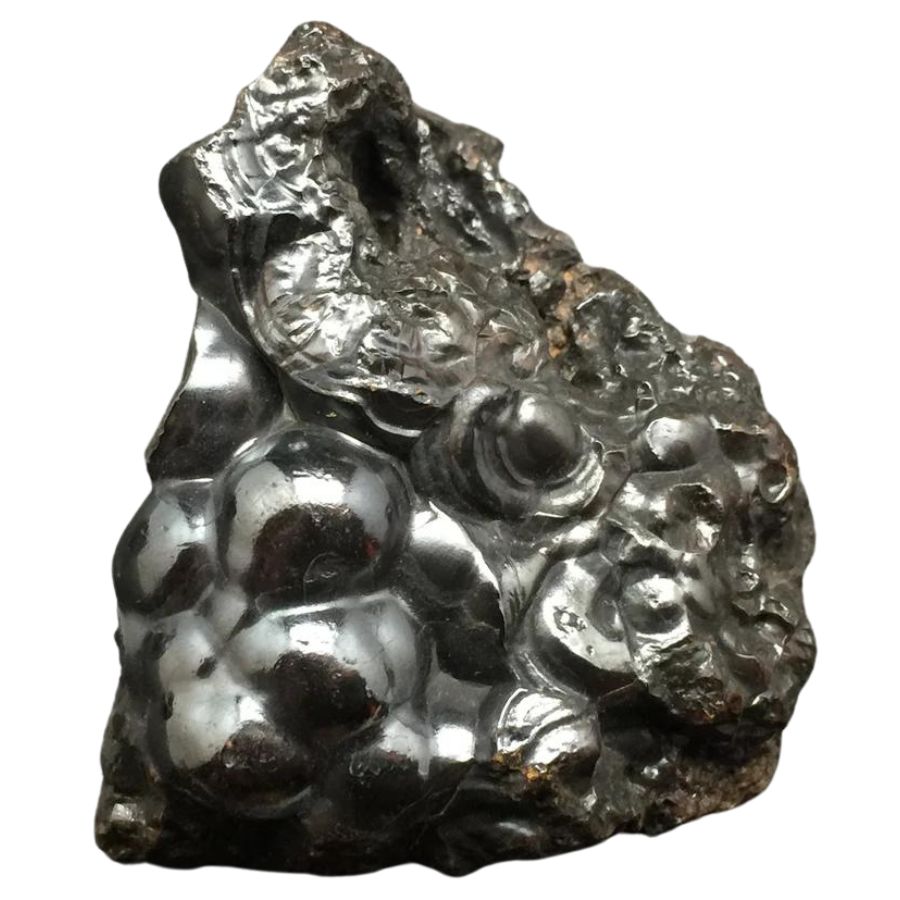
Hematite is a mineral that’s known for its shiny, metallic appearance and rich, red to black color. It forms in both sedimentary and volcanic rocks and is often found in places with standing water or hot springs.
This mineral is not just pretty to look at; it’s also the most important source of iron ore, which means it’s used to make steel.
Hematite can have a magnetic property, which makes it even more interesting to scientists and collectors.
People use hematite in jewelry and decorations because of its unique luster and color. It’s also ground up and used as a pigment for paints and dyes, giving products a red or yellow tint.
Where you can find hematite in Nebraska
- Elk Creek
- Davey
- Brock
Pyrite
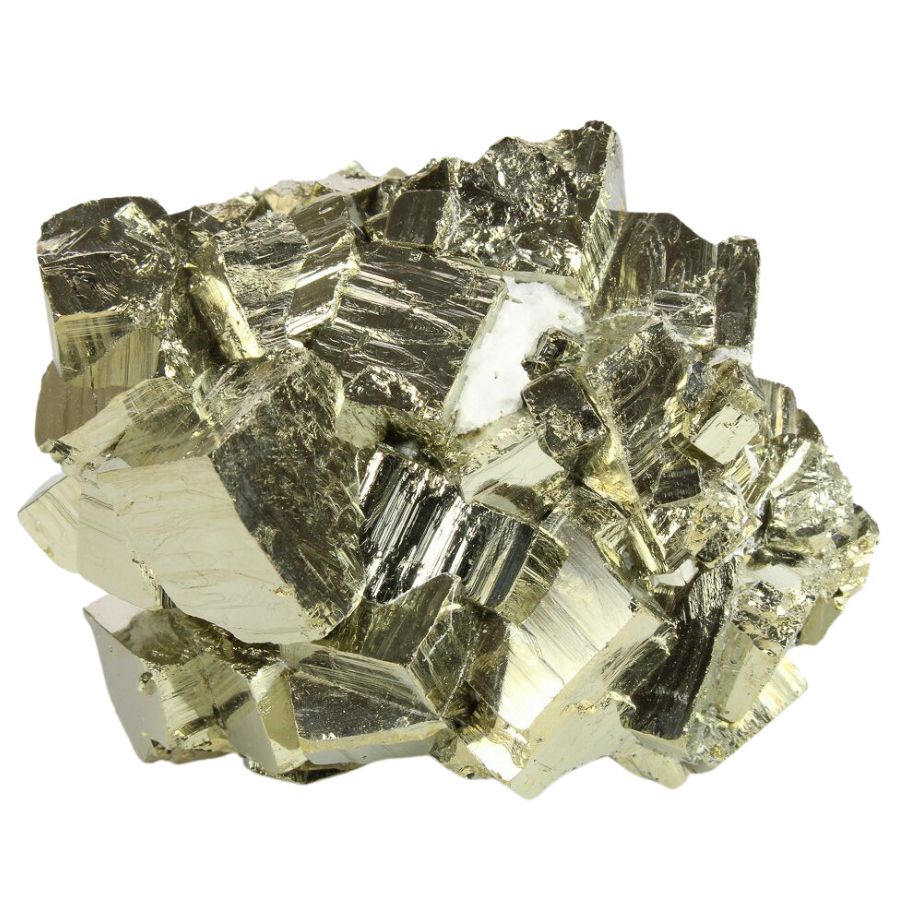
Pyrite, often called fool’s gold, is a shiny, brass-yellow mineral that looks similar to real gold.
It forms in a variety of geological environments, often in sedimentary rocks, as well as in metamorphic rocks and as a replacement mineral in fossils.
This mineral is famous for its metallic luster and cubic crystal structure, making it a favorite among collectors.
Pyrite can create sparks when struck against metal or another hard material, which is why it was used in early firearms to help ignite gunpowder.
Today, pyrite is used in the jewelry industry to make decorative items, although it’s less valuable than gold. It’s also used in the manufacture of sulfuric acid and as a source of sulfur in the chemical industry.
Where you can find pyrite in Nebraska
- Onyx Ace Hill Quarry
- Holmesville
- Elk Creek
- Du Bois
The Most Valuable Rocks and Minerals in Nebraska
Nebraska is home to a variety of rocks and minerals that are valuable in more ways than one, playing a crucial role in several industrial processes.
These natural resources are not only sought after by collectors but are also key components in manufacturing, construction, and technology fields.
Barite
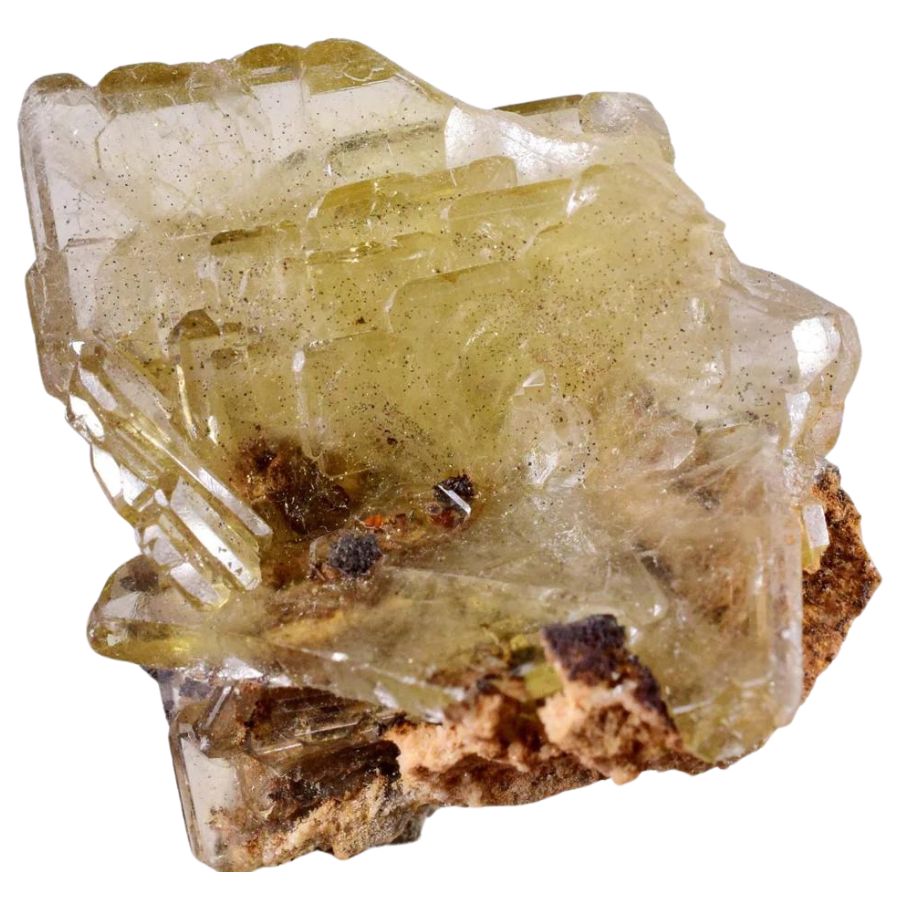
Barite is a mineral made of barium sulfate that often forms in lead and zinc veins in limestone. It has a high density, which makes it quite heavy for its size, and it can appear in a range of colors from white to blue to brown.
Barite’s crystals can grow large and have a glassy luster, adding to their appeal for collectors.
This mineral is known for its ability to block x-ray and gamma-ray emissions, making it valuable in medical science. It is used in the drilling fluids for oil and gas wells because it helps prevent blowouts by increasing the fluid density.
Additionally, barite is used in the production of paint, plastics, and rubber, where it acts as a filler to add weight and produce more durable materials.
Where you can find barite in Nebraska
- Plattsmouth
- Wymore
- Elk Creek
Copper
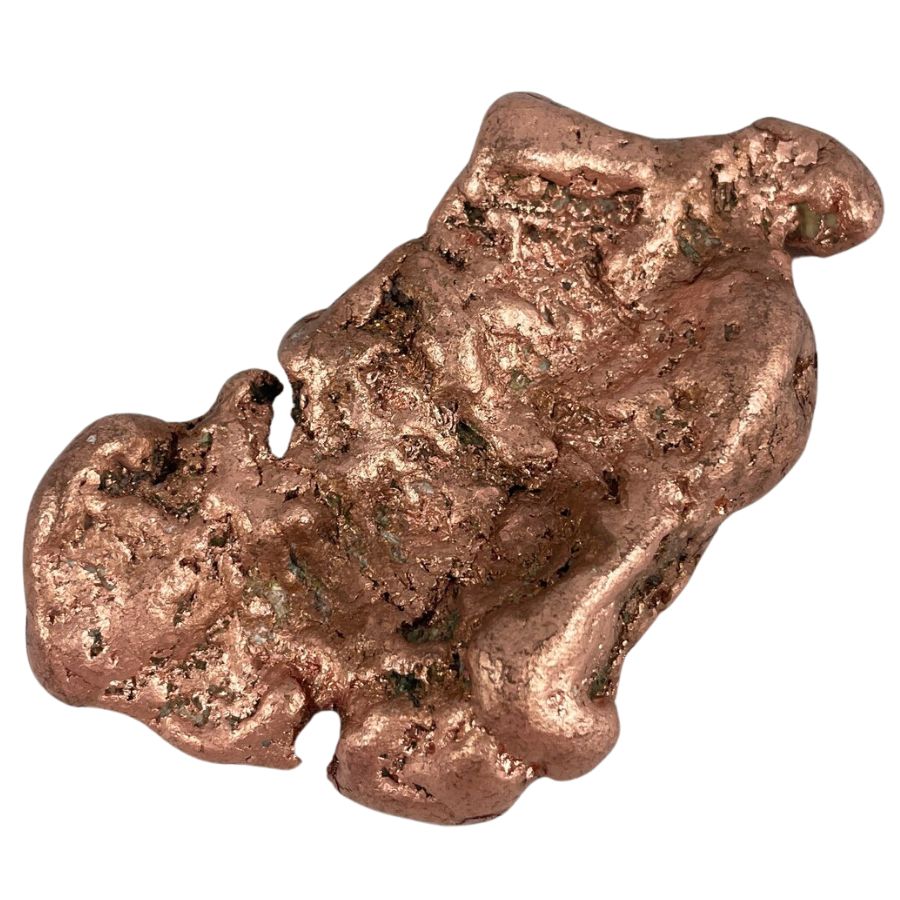
Copper is a metal with a distinctive reddish-brown color that is known for its high electrical and thermal conductivity. It occurs naturally in the Earth’s crust and is mined from large open pit and underground mines.
This metal is very malleable and ductile, making it easy to shape and stretch into wires without breaking. Copper doesn’t react with water, which makes it an excellent choice for plumbing materials.
It is widely used in electrical wiring and electronics because it efficiently conducts electricity. Copper is also a part of many alloys, such as bronze and brass, which are used to make coins, jewelry, and other decorative items.
Where you can find copper in Nebraska
- Holmesville
- Clay County
- Custer County
Goethite
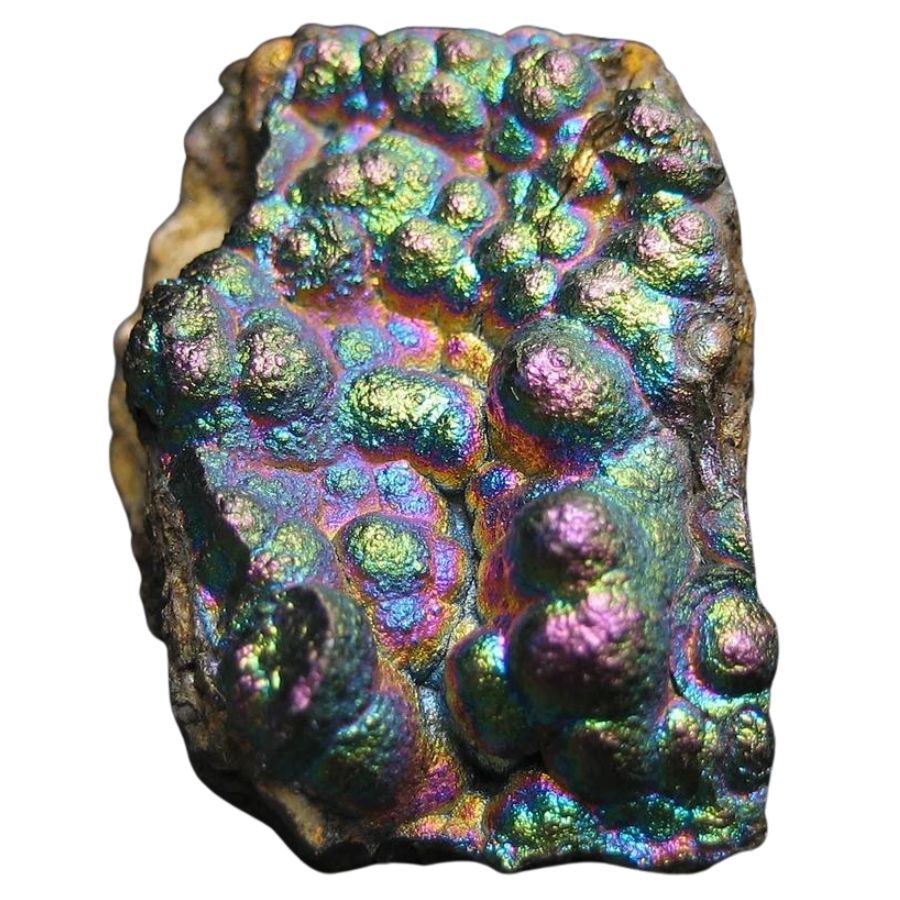
Goethite is a brownish mineral made of iron oxide that often forms in soil and sedimentary rocks. It gets its color from the iron content and can have a shiny or dull surface.
This mineral is one of the valuable rocks in Nebraska, known for its role in creating rich, red soil that’s good for growing crops.
It’s used as a pigment in paints and dyes because of its color. Goethite is also popular among collectors who appreciate its variety of shapes and textures.
Goethite changes to hematite when exposed to oxygen and water over time, making it an important part of the process that creates iron ore.
Where you can find goethite in Nebraska
- Beatrice
- Ashland
- Orella
Sphalerite
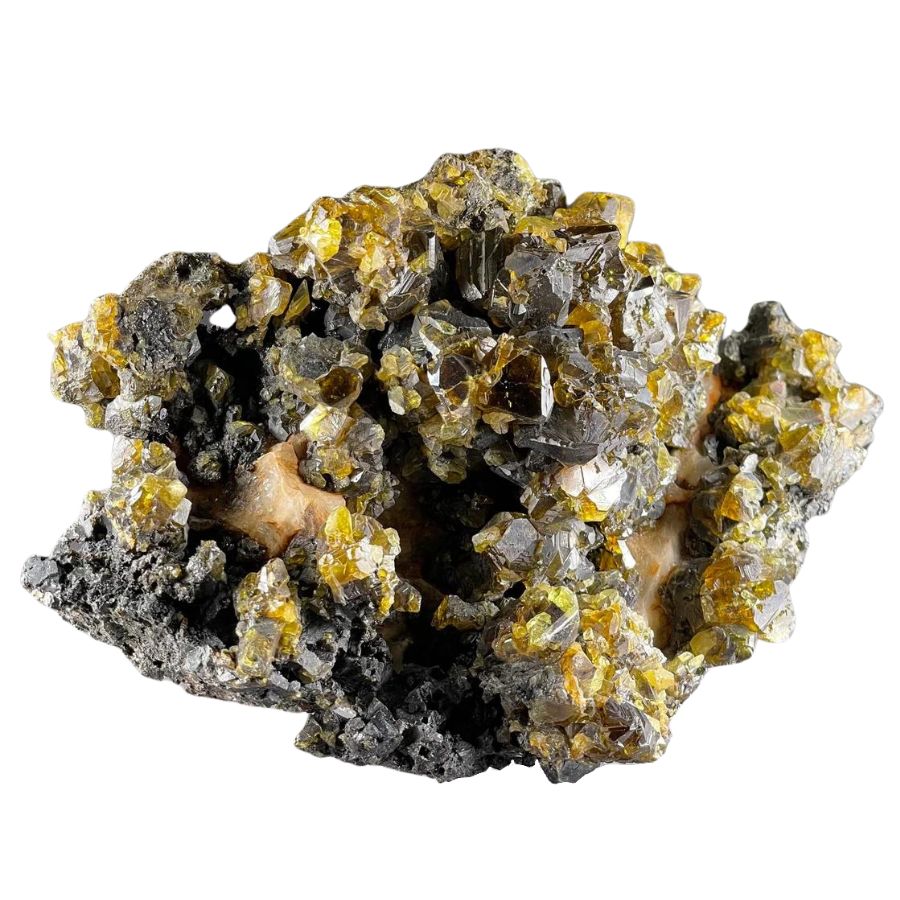
Sphalerite is the main ore of zinc and is made of zinc sulfide. It forms in hydrothermal veins, where hot, mineral-rich water flows through cracks in the rock.
This mineral can range in color from yellow to dark brown and even black, depending on its iron content.
Sphalerite is known for its high dispersion, meaning it can scatter light into all colors of the rainbow, making it very shiny and attractive.
It’s mined for zinc, which is used to protect steel from rusting and in making batteries. Sphalerite crystals are also collected for their beauty and can be cut into gemstones for jewelry.
Where you can find sphalerite in Nebraska
- Plattsmouth
- Holmesville
- Elk Creek
How to Identify The Rocks and Minerals Found in Nebraska
Discovering how to identify the gems, crystals, and rocks in Nebraska can turn an ordinary walk into a fascinating treasure hunt.
Learning about their different colors, textures, and properties can help you become a savvy explorer of Nebraska’s natural wonders.
Observe the Luster
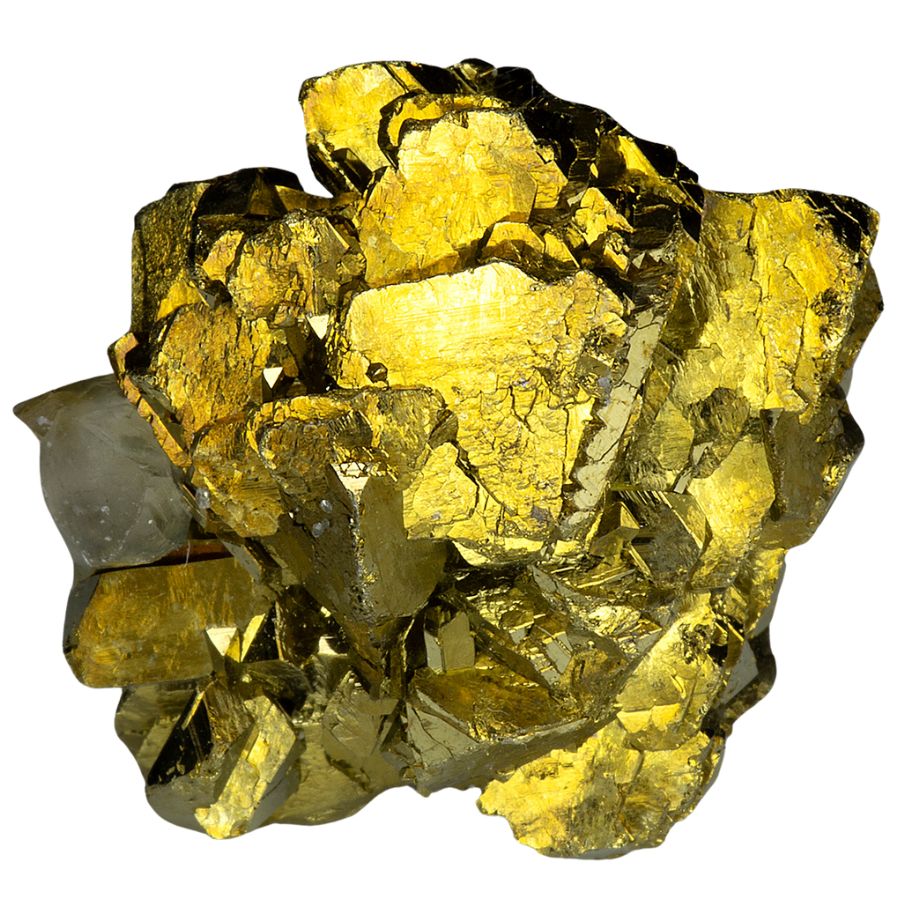
Luster is the way a rock or mineral shines when light hits its surface. If a rock looks shiny like metal, it has a metallic luster, which is common in minerals like chalcopyrite.
Some rocks have a glassy luster, like celestine, meaning they shine like glass. This type of luster is often seen in quartz and other minerals that break with a smooth surface.
Rocks that look dull or have no shine have an earthy luster. This kind of luster is typical for rocks that feel rough like clay.
Determine the Crystal Shape
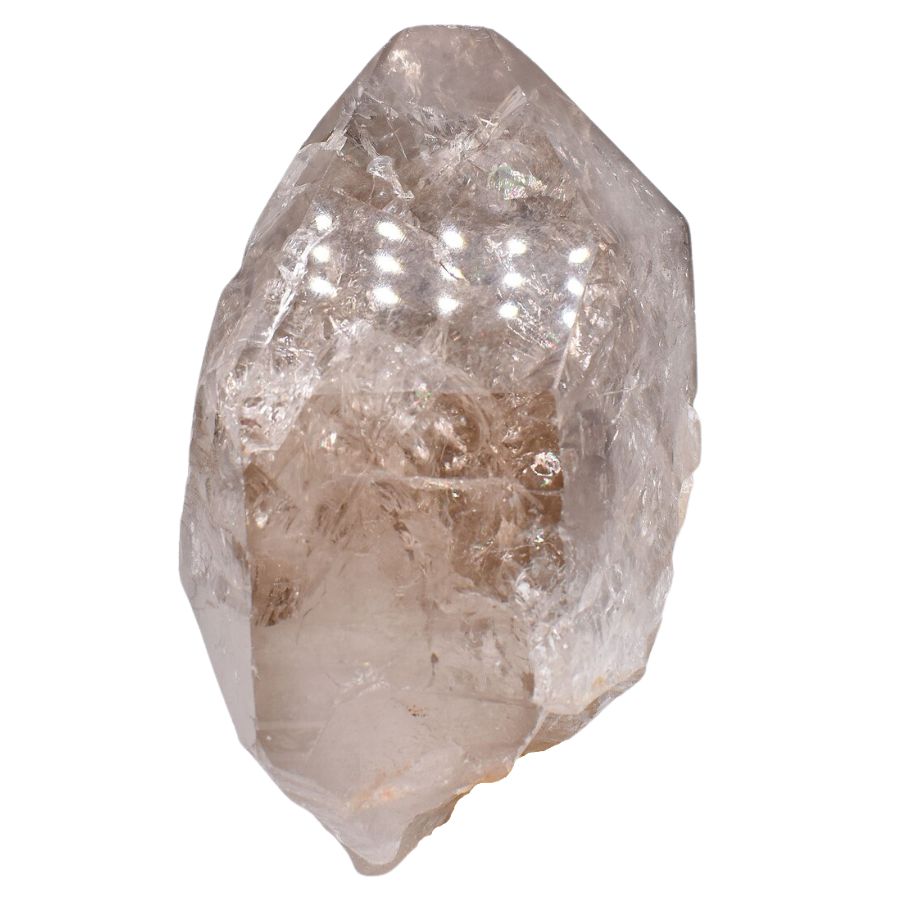
Looking at the shape of crystals can tell a lot about a rock or mineral. For example, quartz often forms long, six-sided columns that can be pretty easy to recognize.
Garnet, on the other hand, creates deep red crystals that are shaped like twelve-sided balls.
Knowing these shapes helps identify the minerals quickly. By comparing these shapes to pictures or guides, anyone can start to identify different minerals and rocks just by observing their crystal structures.
Look for the Cleavage or Fracture
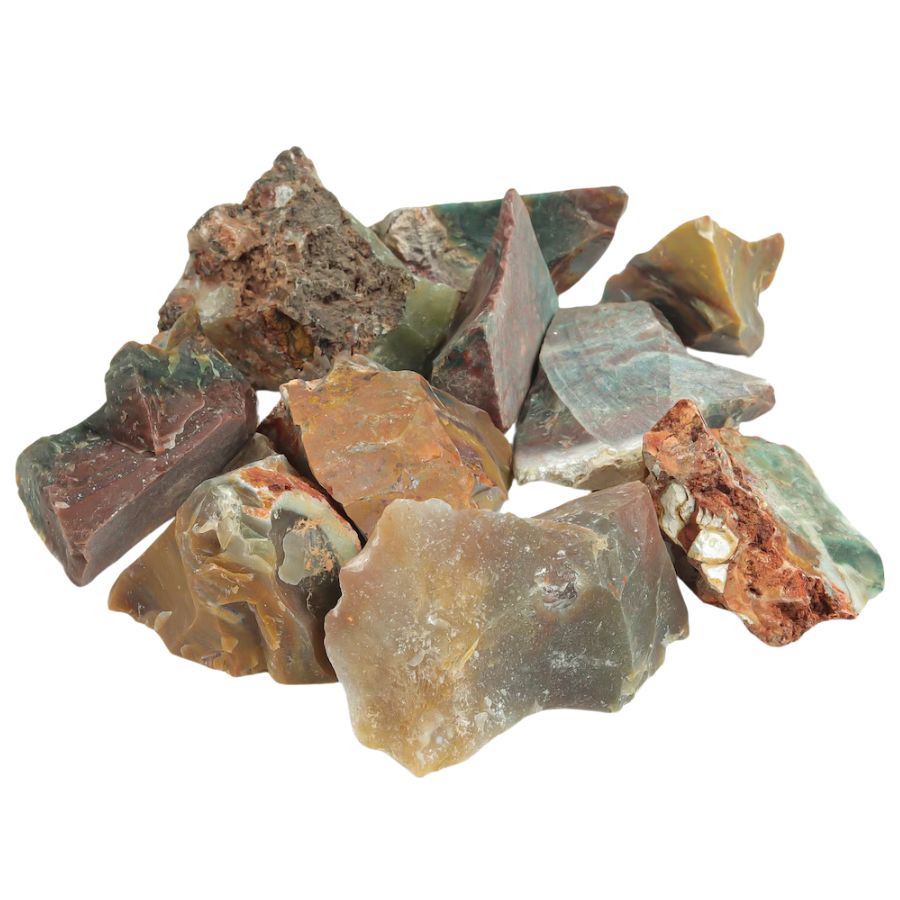
When trying to figure out what kind of rock or mineral you have, looking at how it breaks can be a big clue. If a mineral splits easily and smoothly along flat surfaces, it has good cleavage, like gypsum.
On the other hand, if it breaks with uneven or curved surfaces, that’s called fracture, like the way jasper breaks into pieces with jagged edges.
This difference in breakage helps scientists and enthusiasts in Nebraska rock identification by narrowing down the possibilities.
Recognizing these patterns of breakage isn’t just useful; it’s like solving a puzzle, putting together clues to figure out the mystery of the rock’s true nature.
Use the Acid Test
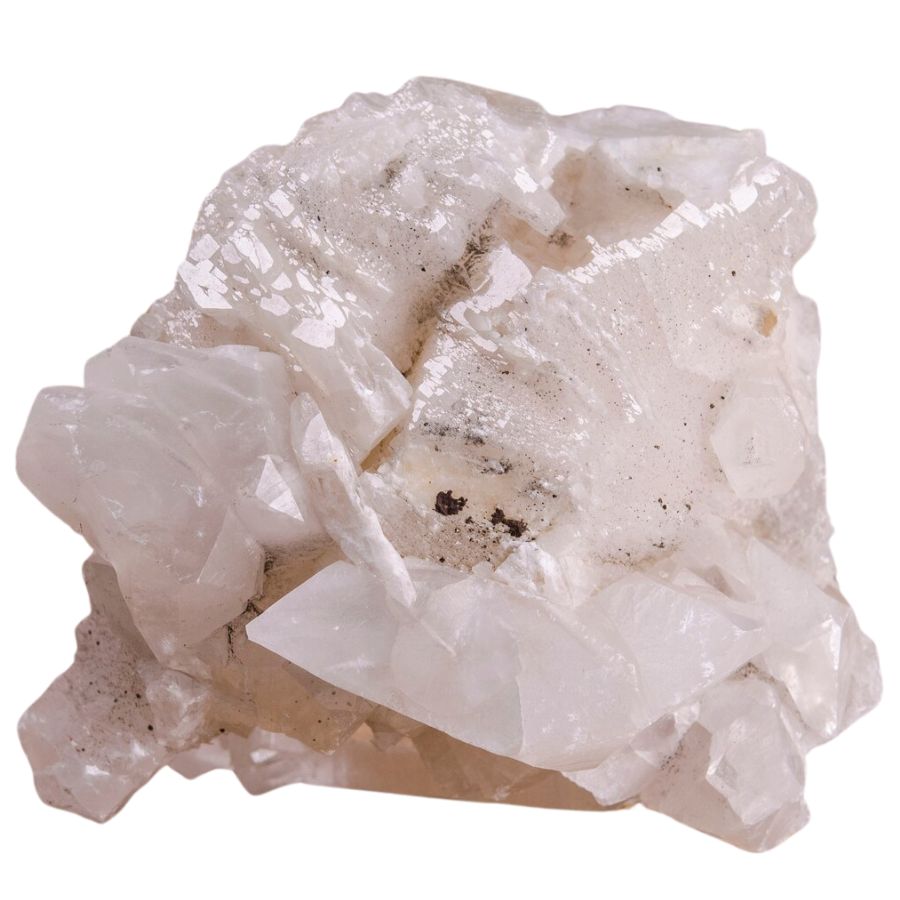
Testing rocks with a bit of acid is a cool way to find out what they’re made of. If you put a drop of dilute hydrochloric acid on a rock and it starts to fizz, it means there might be calcite or dolomite in it.
This fizzing happens because the acid reacts with the carbonate minerals in the rock, releasing carbon dioxide gas. It’s like the rock is telling you what it’s made of by how it reacts. Not all rocks will fizz with acid, though.
Rocks without carbonate minerals won’t have any reaction, which also helps narrow down what kind of rock or mineral you have.
Look for Fluorescence
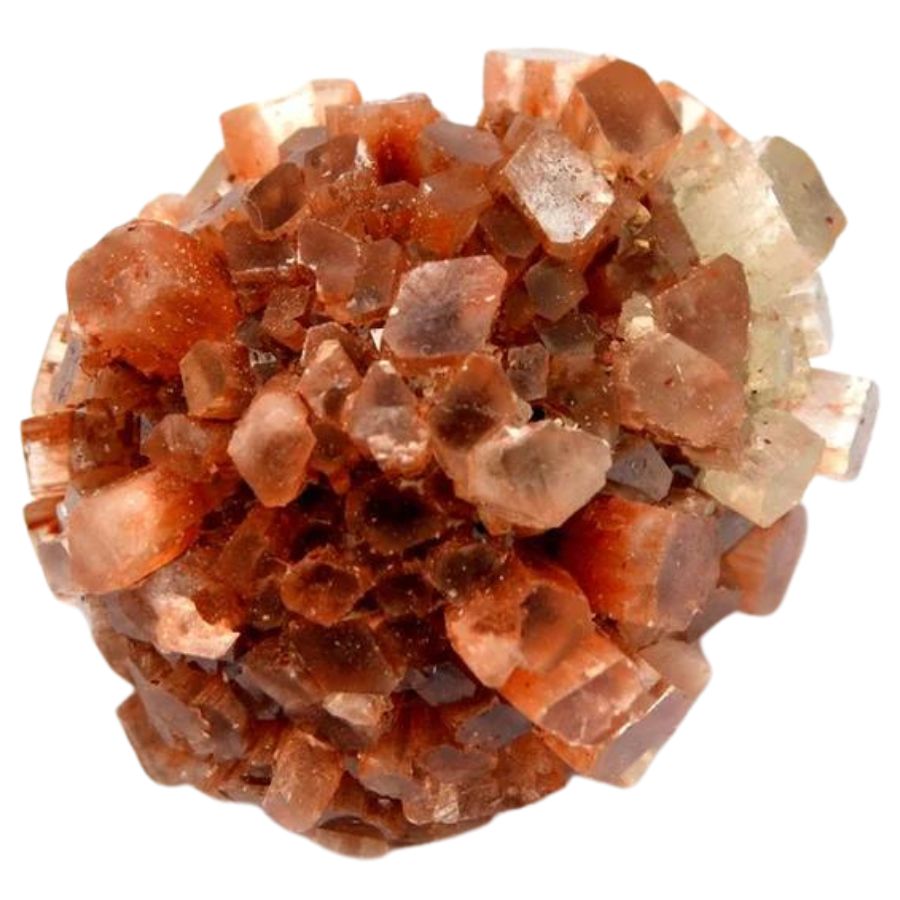
When you shine ultraviolet light on some minerals, they light up in amazing colors. This cool effect is called fluorescence, and it helps tell these minerals apart from others.
With a handheld UV light in a dark room, you can see minerals like calcite and aragonite glow bright colors.
Calcite typically fluoresces in a range of colors from red to blue to white, while aragonite usually glows in shades of green or blue under ultraviolet light.
Fluorescence is not just for fun; scientists use it to identify and study different minerals. Knowing which minerals glow can also help collectors find and categorize their specimens.

